MO Tested: Cardo Systems PackTalk Bold

Voice control becomes more than a novelty
Helmet communication systems have moved beyond the upstart phase of their existence, and now the major manufacturers (primarily Cardo Systems and Sena) are working on ever-increasing refinement. Case in point is the Cardo Systems PackTalk Bold. The company’s Dynamic Mesh Communication (DMC) system has been around for a couple years and has grown quite popular with its increased flexibility compared to Bluetooth group communications. To this improved group chatting, the PackTalk Bold takes the company’s top-of-the-line communicator and adds next-generation voice control, allowing riders to keep their hands on the motorcycle’s grips where they belong instead of manipulating the controls of a helmet-mounted communicator.
Installation
Mounting the Cardo Systems PackTalk Bold to your helmet is straightforward. Two mounting options are provided with the kit to give the flexibility to install the PackTalk to just about any helmet. Our test subject, a Bell SRT-M, couldn’t accommodate the spring clip that slips between the helmet shell and the protective liner because of the cables used to actuate the internal visor. So, I used the adhesive mount for the Bold. Since I wasn’t happy with how the wires prevented the helmet’s neck roll from seating securely, I poked a small hole in the padding and ran the wires directly through it.
Mounting the speakers was easy since the helmet had built-in cutouts to accommodate them, but I ended up using the additional padding included in the kit to move the speakers closer to my ears. The boom microphone required for the modular helmet fit nicely – even with the limited space under the helmet’s chin strap. All told, after 20 minutes, the PackTalk Bold was completely installed – though I did wait overnight before taking it for a ride because I wanted to make sure the adhesive mount had cured completely.
One nice feature about the Cardo Systems’ installation is that the speakers are connected by a 1/8-inch plug identical to those used in headphones. If you’re the type of person who likes to ride with earphones, the PackTalk Bold will allow it.
Usability
Pairing the PackTalk Bold to my iPhone took seconds, and I was immediately able to make phone calls and listen to music (or turn-by-turn directions). My initial impressions were quite positive and only grew the more I used the system.
In my time using the PackTalk Bold, I’ve been quite impressed with its accuracy – once I’d memorized the language that is required to achieve the desired function. In my initial use of the PackTalk, my success rate was roughly 80% of my requests, but as I adapted to the idiosyncrasies of the system, my accuracy has improved to well over 90% of my requests. When a command fails, it is usually because I did not include a long enough pause between the “Hey, Cardo” and the command. To that end, I wish there were an audio cue that says the system is ready for a command. The integration with Apple’s Siri is spot on – though the wait from the “Hey, Siri” command to the actual availability of Siri is a few seconds as the PackTalk communicates with the iPhone. I would expect a similar experience for Android phones.
Overall, Cardo’s natural language commands are a huge benefit, particularly since I find the control buttons on the unit itself to be difficult to feel with gloved fingers. The buttons themselves are quite small. The rolling volume controller, however, is easy to manipulate and quite intuitive for fine-tuning the volume (although you can also use your voice). At a stop, when I need to mute my audio to talk to someone, the quick forward then back roll immediately does the trick – a very nice touch.
When it comes time to talk with your fellow riders, the PackTalk Bold utilizes Dynamic Mesh Communication (DMC) which was designed to address the issues encountered with previous Bluetooth intercom systems. Essentially, the DMC creates a self-healing network that allows riders to rearrange their order within the group and even exit and re-enter without incident. Cardo Systems claims that DMC can manage up to 15 members over a range of 1 mile between individual users and over a combined range of 5 miles in a group ride.
Since I only had two PackTalk Bold units, I couldn’t test them beyond how it works as a pair. However, with that said, the communication system was simple to use. One rider initiates the group (of any number) by pressing two buttons on the unit. All other riders who want to join the group must be within 10 feet of the leader when they press their intercom button. Easy-peasy.
After the initial pairing, the group will continue to connect to each other when they are in range. While I can’t attest to a mile range, I can say that the range covered me and my compatriot over a wide variety of distances (that rarely was more than a quarter mile) and around corners up in the mountains. The communication was clear, and we were able to talk at a conversational volume no matter the road speed. Not only is this kind of communication fun while riding, the lead rider can also warn others of hazards in the roadway. Once you go riding with a buddy and can talk about the ride, you’ll probably never want to go back to riding together but not being able to talk.
But what about battery life with the DMC which is claimed to suck the power much quicker than with Bluetooth? Well, the PackTalk Bold was able to make it through an entire day of riding with the DMC without needing to be recharged. (Something that the Sena 30K was not able to do with its mesh communication.) However, if you’re doing something silly like an Iron Butt, you can charge the PackTalk while using it as long as you have a power supply and a micro-USB cable.
If your buddy doesn’t have a Cardo System communicator, the pairing steps are a little more involved, but you can connect via Bluetooth for a two-way conversation or to bridge that person over into a DMC mesh. While I never had the chance to test the bridging function, the Bluetooth pairing is simple and produces communication on par with most Bluetooth systems.
Audio quality
If you’ve read my previous helmet communicator reviews, you know that I typically ride with Etymotic mk5 Isolator Earphones which act both as my earplugs to protect my hearing from road noise and as my headphones. Well, with the PackTalk Bold, the 40mm speakers are capable of putting out enough distortion-free sound that I can wear my Etymotic ER* 20XS High-Fidelity Earplugs and still hear the Cardo perfectly – even at highway speeds. I am really growing fond of this new audio setup. (An aside: I also really like not having to deal with the headphone cables anymore.)
Around town, when I’m not wearing earplugs, the audio quality is better than any helmet communicator I’ve previously tested with none of the whines I’ve recently experienced from recent Sena systems.
On the phone
While I’ve had good experiences with the two-way DMC communications, folks on the other end of phone calls have told me my voice volume is a little lower than on other Bluetooth units I’ve tested. They say the noise reduction is good and allows for my words to come through clearly, but I’m just a little bit quieter.
Overall, I’m quite happy with the Cardo Systems PackTalk Bold, and in the couple of months that I’ve been testing the unit, it has become my favorite helmet communicator. Note that I don’t take this claim lightly. It means that, since I own several helmets, I’ll need to get additional mounting kits for these helmets so that I can move the PackTalk head unit among them.
So, is the Cardo Systems PackTalk Bold worth the $329.95 individual price or the $579.95 dual pack MSRP? If you’re a regular rider who finds the communication and media capabilities that this unit provides appealing, you really can’t go wrong. It’s even better if you get the dual system and use it with a friend. The only caveat I have about buying into this system is that if your riding group uses a competitor’s system (like Sena), you’ll probably want to go with what they have for maximum compatibility. However, as it stands now in the competition between Cardo Systems and Sena, I’d have to say that Cardo has the more polished mesh system based on my experience with the two. Now, we’ll have to see how this battle develops.
Buy or learn more about the Cardo Systems PackTalk Bold here.

Like most of the best happenings in his life, Evans stumbled into his motojournalism career. While on his way to a planned life in academia, he applied for a job at a motorcycle magazine, thinking he’d get the opportunity to write some freelance articles. Instead, he was offered a full-time job in which he discovered he could actually get paid to ride other people’s motorcycles – and he’s never looked back. Over the 25 years he’s been in the motorcycle industry, Evans has written two books, 101 Sportbike Performance Projects and How to Modify Your Metric Cruiser, and has ridden just about every production motorcycle manufactured. Evans has a deep love of motorcycles and believes they are a force for good in the world.
More by Evans Brasfield



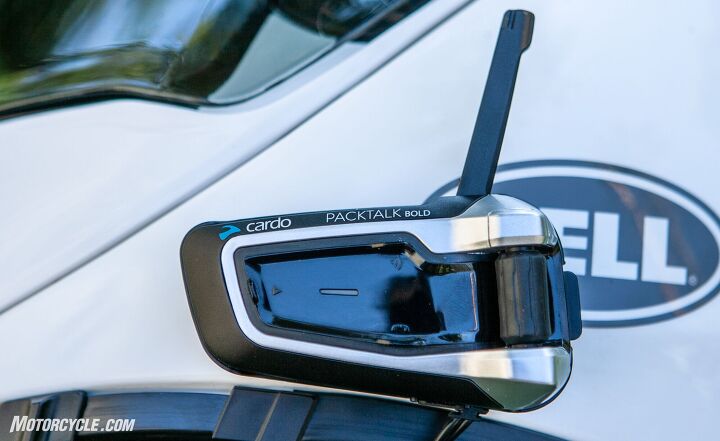
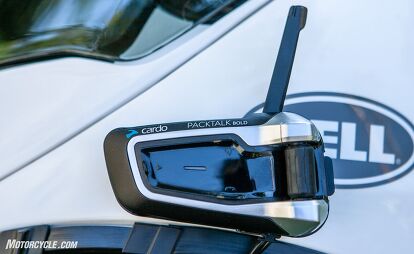



















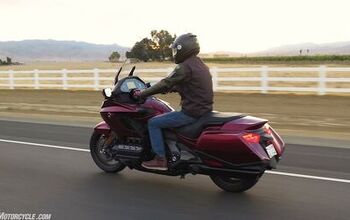
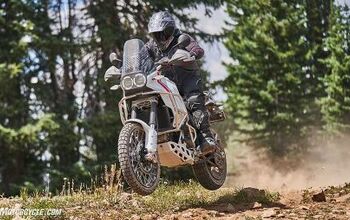
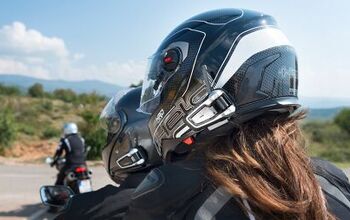






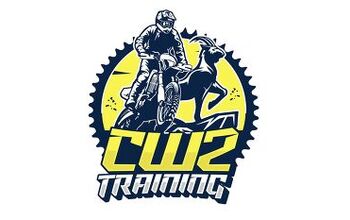







Comments
Join the conversation
Review of Cardo’s design and company support: I bought 3 G9X less than 3 years ago from a large dealer, $700. They have a rechargeable battery that isn’t serviceable in them. They also cannot be repaired. Therefore I need to buy 3 more to replace what i have because one tone of them went bad. I think it is irresponsible for the vendor to design that way and therefore it is a flaw in the company and support for them. I tried to ask for help and escalated but only got a discount code to buy 3 more. I cannot recommend this company as they do not support their devices for long term. These devices should be supported and last more than 3 years are a bad long term investment.
Is there any way to use bluetooth speakers with this unit?